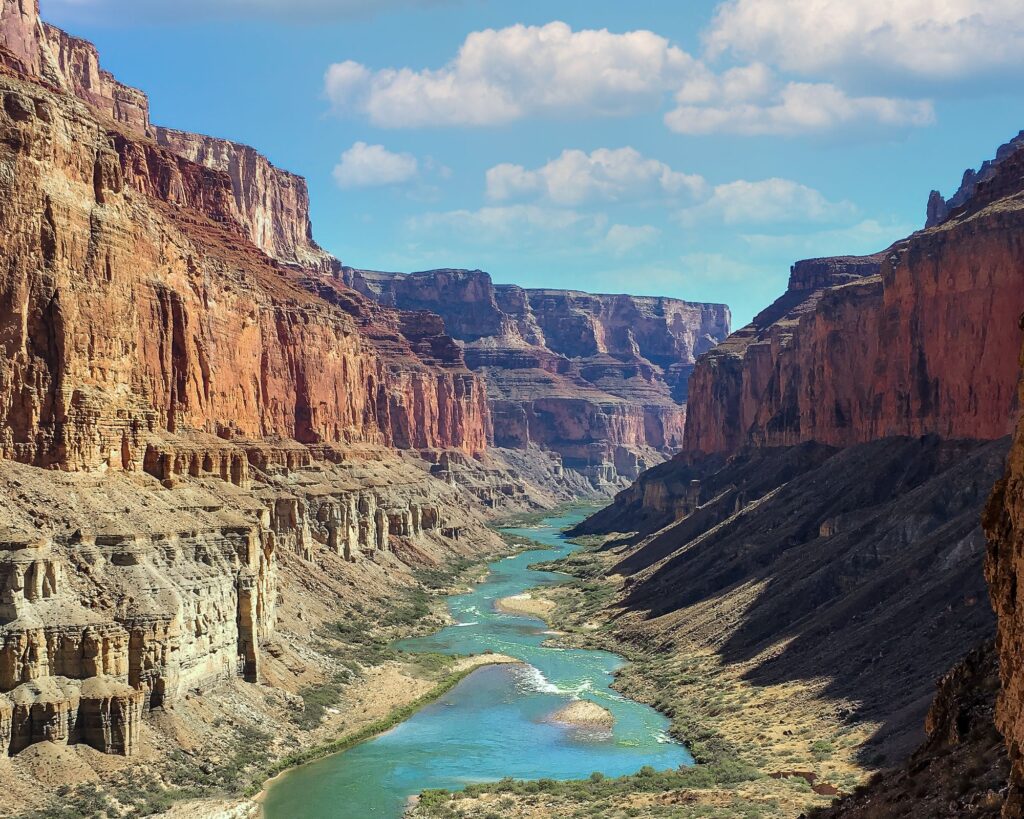FLUVIAL GEOMORPHIC SYSTEM
The fluvial cycle geomorphic system is powered by the conversion of the potential energy of solar distillation and gravity to the kinetic energy of motion and heat. Most of the energy is lost to the friction of internal turbulence of flowing water but perhaps 2 to 4 percent of the total potential energy of water flowing downhill over an eroded bed is converted to the mechanical work of erosion and transportation.
Water, flowing down to the sea over and immediately beneath the land surface, is the dominant agent of landscape alteration. Surface weathering and groundwater solutions provide a load for flowing streams, and mass wasting, may dump great quantities of rock debris at the foot of slopes, but eventually, rivers must carry all but a small fraction of the total rock waste from land to sea.
Fluvial processes vary intensely among climate regions and along gradients of temperature, precipitation, altitude, and seasonality. Furthermore, on the time scale in which landscape evolves, climatic regions now intensely arid show evidence of previous fluvial erosion and deposition. The fluvial system is so widespread and effective that it has been commonly regarded as the ”normal process of landscape evolution on earth based on the classification of the geomorphic cycle of certainty that” the greater part of the land surface has been carved by the familiar processes of rain and rivers, of weather and water.

OVERLAND FLOW (Fluvial Geomorphic System)
Infiltration, Throughflow, and Sheet flow
The proportion of surface and subsurface water that feeds a stream varies greatly with climate, soil type, bedrock, slope, vegetation, and many other factors. It has been estimated that one-eighth of the annual runoff of the hydrologic cycle goes directly overland to the sea, and seven-eighth of the water goes underground at least briefly. Even as water begins its downhill flow, its chemical energy has been largely expanded.
The infiltration capacity of soil is controlled by the duration and intensity of precipitation, prior wetted conditions of the soil, vegetation, soil mineralogy texture and texture slope, and other factors. In a humid climate during a light steady rain on a landscape with a continuous vegetation cover, infiltration may continue for a long time, the water moving downward through the zone of aeration toward the water table. However, eventually, the soil voids will fill with water, and saturation overland flow will begin.
The throughflow and interflow are defined as seepage pressure generated by infiltrated groundwater moving downslope within the soil profile, this water moves relatively rapidly through interconnected cracks, animal burrows, decayed root channels, and other soil voids at shallow depth, whereas groundwater flow moves downslope but outward towards the soil surface. The sheet flow is the scattering effect of impact that suppresses channel formation, and the muddy water flows as thin moving surface layers.
Rills and Gullies
some threshold of erosional and transformational energy that combines the factors of rainfall intensity, grain size, cohesion, infiltration capacity, slope, capacity, and more turbulent current erode small channels, or rills. The process quickly focuses on points of more rapid seepage discharge, undermining small pits or rill heads. A gully is a stream channel with discrete cut banks and often with a steep head, that distinguishes it from rill.
SOIL EROSION
The transition from overland flow to rills and gullies, and the resulting abrupt increase in soil erosion, seems to involve several thresholds, critical parameters at which processes abruptly change. Fluvial soil erosion is the collective result of creep, raindrop impact, sheet flow, piping, rill wash, and erosion by larger channels, plus losses by groundwater solution. All the factors of soil formation contribute to the rate at which mass is removed from the landscape.
CHANNELED FLOW: CHANNEL PROCESSES
The channels whether formed by chance or necessity, by headward erosion of downslope convergence, whether inherited or newly formed, systems of branching river channels dissect most of the subaerial landscape. Some channels are occupied by permanent streams that flow throughout the year, others have intermittent streams, and still others are used only briefly during and immediately after precipitation ephemeral streams.
In humid regions, the mean annual discharge of rivers increases downstream unless structural controls such as karst divert some of the water. most of the annual runoff from the land is poured into rivers at the heads of small tributaries although water can be added from anywhere from surface runoff and groundwater flow. Rivers in humid regions are called effluent because they receive contributions from groundwater. Rivers in humid are called effluent because they receive contributions of water to the ground in addition to losing it by evaporation, and many of them dry up entirely without reaching the sea. These are called influent streams.

